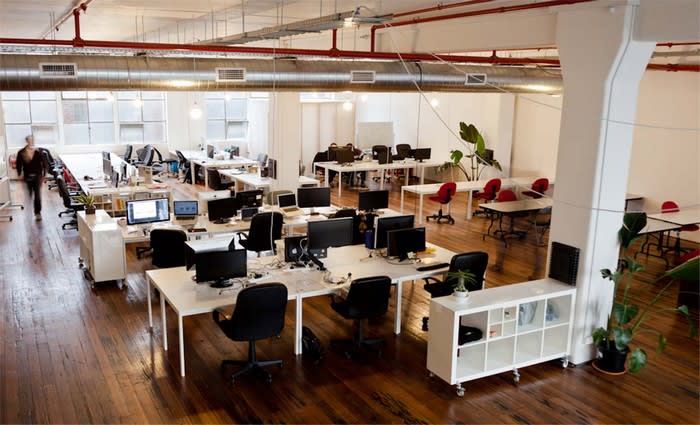Melbourne holding the largest share of nation's co-working office spaces: HTW
Co-working office spaces increased by nearly 300% in the last five years, with Melbourne holding the largest share.
Co-working office space is one of the fastest growing segments of the commercial leasing market, the latest report by Herron Todd White (HTW) noted.
Research shows the number of co-working spaces in Australia grew by 297% between 2013 and 2017, occupying 193,190 square metres across six cities.
Melbourne holds the largest concentration of co-working spaces with 49% followed by Sydney with 38%.
"We expect this segment of the market to continue growing strongly," the HTW report noted.
Melbourne CBD’s overall office vacancy rate has reduced to 4.6% over the six months to January 2018, according to the Property Council of Australia’s Office Market Report.
Melbourne CBD is now level with Sydney CBD, together showing the lowest vacancy rates amongst all of Australia’s CBDs.
According to the latest report from HTW, the reduction in vacancy is primarily due to the high net absorption rate of prime Melbourne CBD office stock.
The North-Eastern and Docklands precincts have the lowest vacancy rates at 1.5% and 1.2% respectively, while vacancy rates are highest in the Western and Spencer precincts, reflecting vacancy rates of 6.6% and 8.2% respectively.
There is limited new prime office supply in the CBD due for completion over the next two years before the large increase of supply forecast for 2020.
Therefore, it is anticipated that vacancy rates will continue to fall over 2018 and 2019 before rising again in 2020.
The report suggests the market will see potentially sharp rental growth over the next two years as well as a decline in incentives, before levelling out again from 2020.
Strong demand is continuing for good quality office properties and properties with value-add or redevelopment potential within the Melbourne CBD, Metro and St Kilda Road office markets.
This is primarily due to the lack of suitable stock on the market and weight of capital seeking limited investment opportunities in this segment of the market.
The two recent sales in the CBD this year, 470 Bourke Street and 454 Collins Street, both achieved strong results.
470 Bourke Street, the headquarters of The Law Institute of Victoria, sold subject to a short-term leaseback for more than $35 million.
The nine-storey office building with excess land to the rear was purchased by an offshore investor with a capital value rate of circa $10,500 per square metre which reflects the balance land of 368 square metres.
454 Collins Street, an 11-storey C grade building situated at the corner of Collins and Williams Streets, was sold to a Macau investor for $40.1 million on a sharp fully leased yield of 4.21%.
The property was sold subject to a single-tenant leaseback to Robert Christie’s national co-working business on a 10-year term.
The valuation firm suggests that market yields are firming for well located investment grade assets exhibiting sound fundamentals, such as strong lease profiles and limited capital expenditure requirements.
The report suggests that investor demand is particularly strong for assets in the vicinity of $5 million to $50 million within the CBD and inner suburban locations.
The new statutory revaluations will be conducted as at January 2018 and valuations will be released as part of the FY2018/19 council rates notices and 2019 Land Tax assessments.
The valuers estimate that council site values will continue to increase across the CBD owing to strong capital growth over the past two years since the last Council revaluation in January 2016.
The potential rise in site values implies higher council rates and land tax costs which may impact upon the cash flow of landlords, especially where properties are subject to gross leases.
